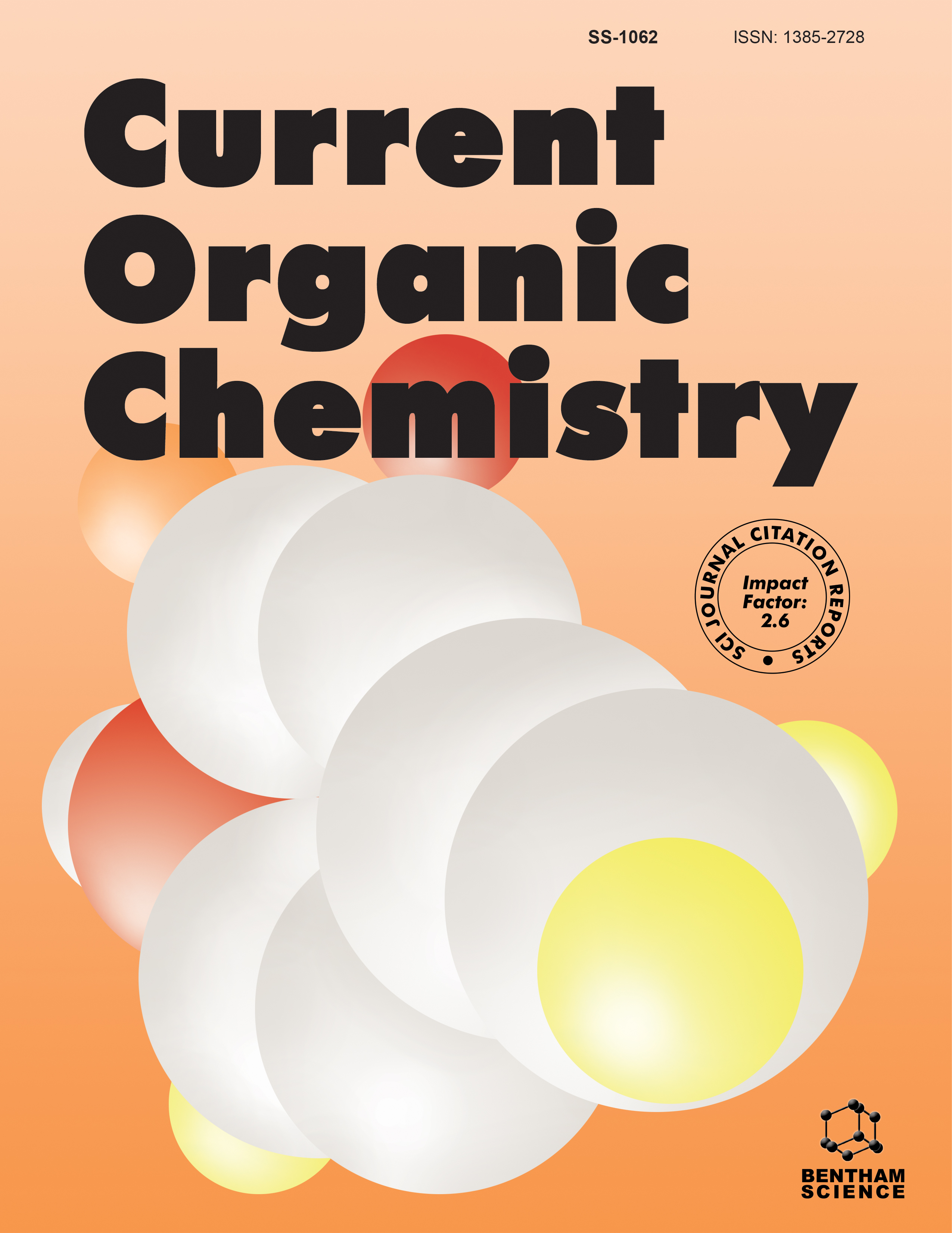- Home
- A-Z Publications
- Current Organic Chemistry
- Previous Issues
- Volume 25, Issue 23, 2021
Current Organic Chemistry - Volume 25, Issue 23, 2021
Volume 25, Issue 23, 2021
-
-
Electrocatalytic Oxidation of Biomass-derived 5-Hydroxymethylfurfural to 2,5-Furandicarboxylic Acid Coupled with H2 Evolution
More LessSimultaneous electrocatalytic conversion of biomass into high-value products and electrolysis of water for hydrogen are promising strategies to relieve the fossil energy crisis. Herein, we overview the recent advances and perspectives in the electrocatalytic oxidation of 5-hydroxymethylfurfural (HMF) and water reduction to synchronously produce value-added 2,5-furandicarboxylic acid (FDCA) and hydroge Read More
-
-
-
Recent Advances in Microwave-Assisted Synthesis and Functionalization of 1,2,3- and 1,2,4-triazoles
More LessTriazoles are five-membered aromatic heterocyclics, which exhibit two isosteric forms (1,2,3-triazoles and 1,2,4-triazoles), as well as multiple applications in medicinal, agricultural, supramolecular, and materials sciences. Famous examples of triazoles include drugs, such as fluconazole, ribavirin, cefatrizine, and tazobactam, as well as herbicides, such as cafenstrole and metosulam. This review aims to present the recent Read More
-
-
-
Recent Advances on Synthesis of 1,4-Benzoxazines and its Derivatives
More LessAuthors: Wei Liang, Li-Jing Min, Liang Han and Xing-Hai Liu1,4-benzoxazine compounds are an important class of heterocyclic compounds. Ever since 1,4-benzoxazine was discovered in 1959, it has attracted chemists due to its unique physiological activities, and their synthesis and application have been studied. However, the traditional synthesis methods of 1,4-benzoxazines have some drawbacks, such as complicated steps, harsh reaction conditions and low yield. Ther Read More
-
-
-
Multicomponent Approach for the Sustainable Syntheses of Pyrido[2,3-d]pyrimidine Scaffold
More LessPyrido[2,3-d]pyrimidine is an N-fused heterocyclic compound formed by the ortho fusion of pyridine and pyrimidine ring. Pyrido[2,3-d]pyrimidines hold a prominent position in medicinal chemistry owing to their wide spectrum of biological activities like antiviral, antihistaminic, antibacterial, diuretic, anti-inflammatory, analgesic, anticonvulsive, antipyretic, etc. The extraordinary features of pyrido[2,3-d]pyrimidines make their Read More
-
-
-
Medicinal Herbs with Anti-Inflammatory Activities for Natural and Organic Healing
More LessOne of the principal causes of different disorders is an uncontrolled inflammatory response. Alkaloids, flavonoids, polyphenolic, proanthocyanidin, terpenoid, and steroid compounds are the main reasons for the anti-inflammatory activities of medicinal herbs and plants. The current manuscript introduces a series of potential anti-inflammatory plants, particularly those which are routines in Iranian and Chinese traditional herbal Read More
-
-
-
Self-Assembly Mode and Supramolecular Framework of Cyclopentanocucurbit[6]uril and Aromatic Amines
More LessAuthors: Jun Zheng, Yan M. Jin, Xi Nan Yang, Lin Zhang, Dao Fa Jiang, Wei Wei Zhao, Ye Meng, Jie Gao and Pei Hua MaSingle-crystal X-ray diffraction analysis, nuclear magnetic resonance (NMR), and other characterization methods are used to characterize the complexes formed by cyclopentano- cucurbit[6]uril (abbreviated as CyP6Q[6]) as a host interacting with p-aminobenzenesulfonamide (G1), 4,4'-diaminobiphenyl (G2), and (E)-4,4'-diamino-1,2-diphenylethene (G3) as guests, respectively. The experimental results show that these th Read More
-
Volumes & issues
-
Volume 29 (2025)
-
Volume 28 (2024)
-
Volume 27 (2023)
-
Volume 26 (2022)
-
Volume 25 (2021)
-
Volume 24 (2020)
-
Volume 23 (2019)
-
Volume 22 (2018)
-
Volume 21 (2017)
-
Volume 20 (2016)
-
Volume 19 (2015)
-
Volume 18 (2014)
-
Volume 17 (2013)
-
Volume 16 (2012)
-
Volume 15 (2011)
-
Volume 14 (2010)
-
Volume 13 (2009)
-
Volume 12 (2008)
-
Volume 11 (2007)
-
Volume 10 (2006)
-
Volume 9 (2005)
-
Volume 8 (2004)
-
Volume 7 (2003)
-
Volume 6 (2002)
-
Volume 5 (2001)
-
Volume 4 (2000)
Most Read This Month
Article
content/journals/coc
Journal
10
5
false
en


